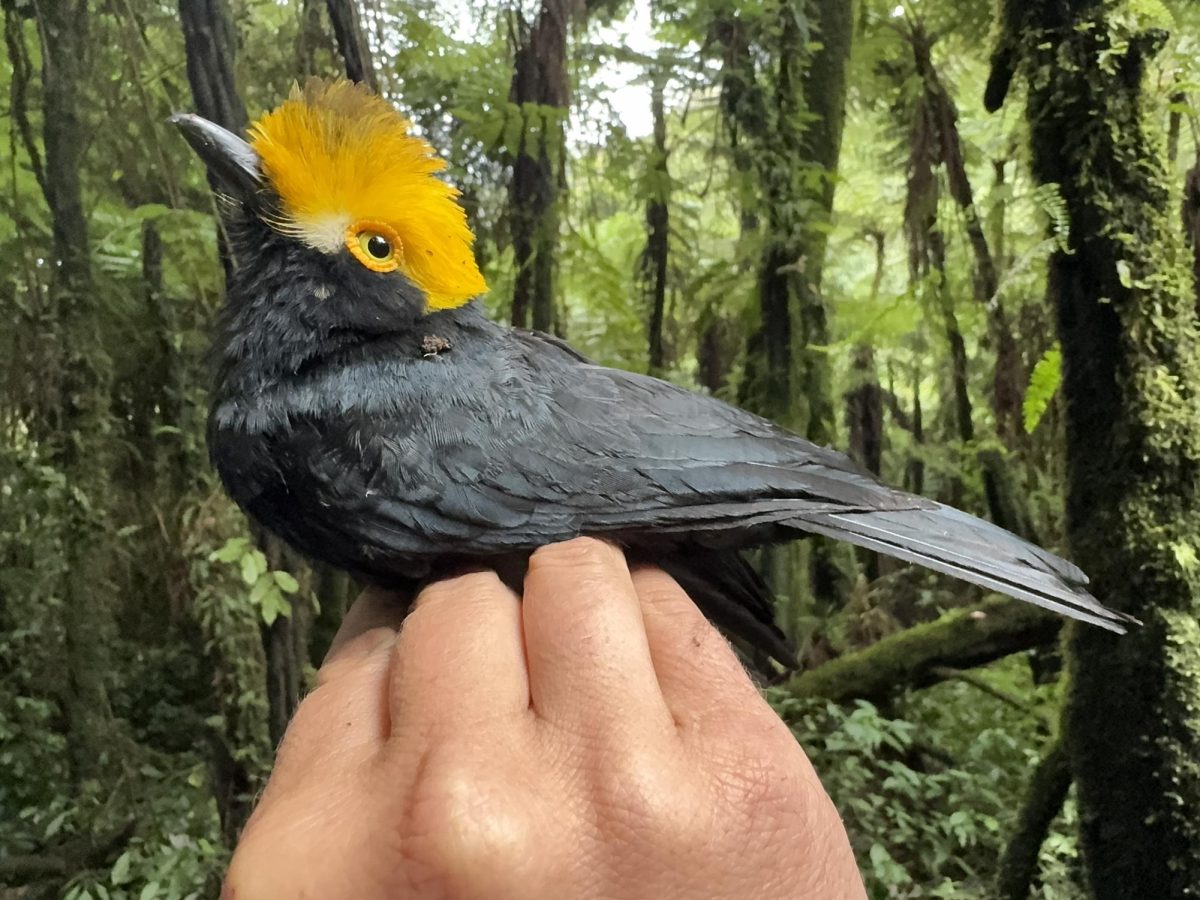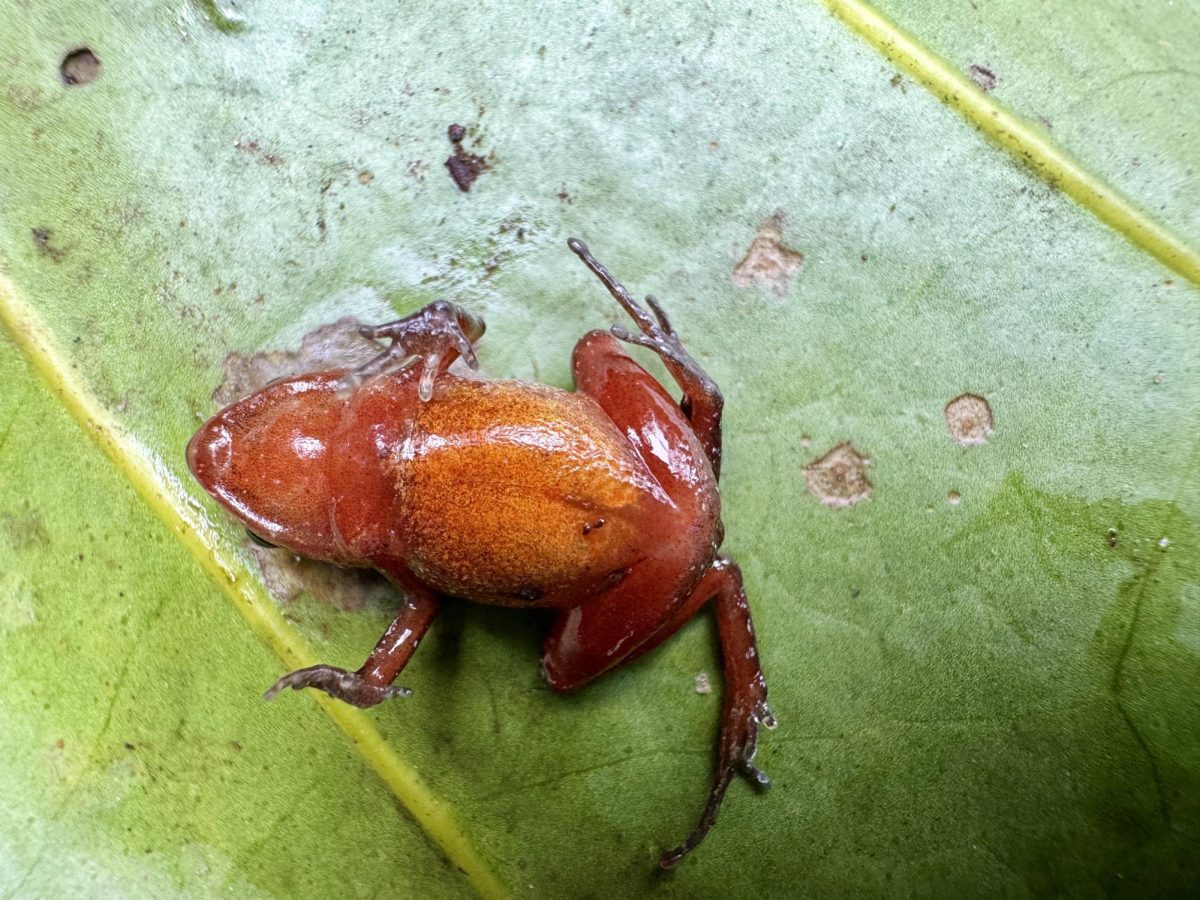Through the dense, foggy forests of Itombwe, Massif, in the Democratic Republic of Congo, two UTEP scientists traversed the mountain ranges to find different species.
Scientists Michael Harvey, Ph.D., and Eli Greenbaum, Ph.D., told The Prospector that they experienced an environment where the fog was so thick that they couldn’t see 20 feet ahead of them. Exploring the forests near the camp, Harvey explains how he heard gurgling and snapping sounds he didn’t recognize. He says upon further examination, within the dense leaves, Harvey saw a bird’s black body, then a bright yellow head, and immediately recognized the Yellow-crested Helmetshrike.
The scientists say documentation for the Yellow-crested Helmetshrike has not been reported for ten years, giving the bird a ‘lost’ status by the American Bird Conservancy. Harvey emphasizes that bird research is outdated and has not been updated since the 1950s because of environmental issues, and lack of ornithologists.
Greenbaum says has been traveling to the Congo for over twenty years and this was his eleventh expedition to find more research on amphibians and reptiles. However, there are no ornithologists, someone who studies birds, that travel to Congo.
“Dr. Greenbaum has been working there for the past twenty years, but there has been no ornithologist working in that region,” Harvey said. “Our goal is to fill in the gap of knowledge. (There are) bird species who live in this region that haven’t been studied because of that gap in knowledge.”
Harvey explained that finding the bird, a species unseen for two decades, was monumental for him.
“What happened is that I went way above camp, and (when) I was coming back, I started hearing these crazy sounds and I came around a corner, (and) right in front of me where these jet-black birds,” Harvey said. “When I first heard them, I had no idea what it was going to be, I came around the corner and saw these black birds, and I was like ‘Oh man, these might be the Helmetshrikes,’ and then I saw that bright yellow crest on their head and (thought) ‘Oh wow,’.”
During their expedition, the team found 18 Helmetshrikes birds and rediscovered the Red-bellied Squeaker Frog that was last seen since the 1950s.
Both UTEP scientists stress the importance of protecting ‘lost’, or endangered species especially with different negative environmental factors like global warming, pollution, etc. Harvey and Greenbaum were on several news headlines, as several scientists recognized their work. Finding the Yellow-crested Helmetshrikes has encouraged updating the outdated exotic bird research to being conservation efforts. Finding one lost bird, or animal, at a time, can have a positive impact on the earth.
Sofia Sierra is the web and copy editor and may be reached at [email protected]









